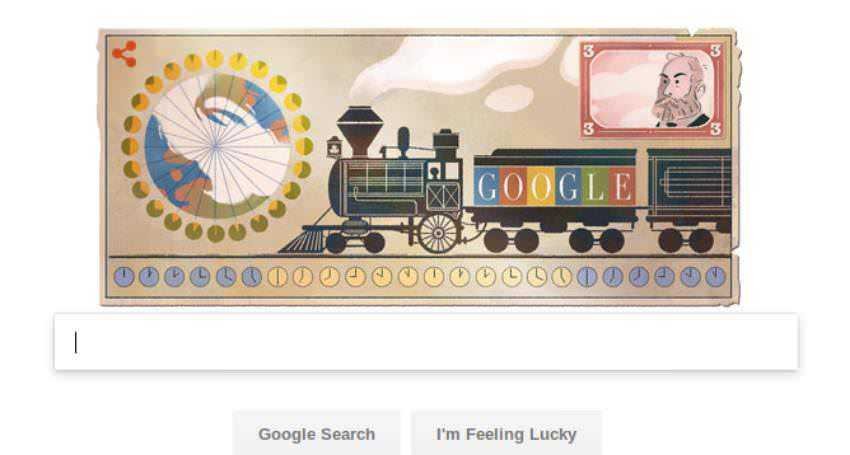Today Google honors with one Google Doodle Sir Sandford Fleming, (7 January 1827 – 22 July 1915). Sandford Fleming who became Ser was a Scottish Canadian engineer and inventor. Born and raised in Scotland, he immigrated to the colony of Canada at the age of 18.
Sandford Fleming's Serge proposed that the land would be divided into time zones, designed Canada's first stamp, left a huge number of topographical surveys and mappings, designed a major part of Intercolonial Railway and Canadian Pacific Railway, and was a founding member Royal Society of Canada and founder of the Royal Canadian Institute, a scientific organization in Toronto.
The idea of separating time zones came to him in 1876 when he missed one in Ireland because the printed schedule said pm. instead of a.m. Thus he proposed a single 24-hour measurement of time, for the whole world, with reference to the center of the Earth, not connected to any meridian surfaceof the earth.
At a meeting of the Royal Canadian Institute on February 8 1879, associated with the Greenwich anti-meridian (now 180 °), suggested that local time zones should be used locally, but would depend on the single world time which he called Cosmic Time.
He continued to promote this system at major international conferences including the International Meridian Conference of 1884. This congress he accepted a different version of World Time, but refused to accept the zones, stating that it was a local matter outside his jurisdiction. Nevertheless, since 1929, all the important ones countries in the world, they had accepted time zones.
With information from WikiPedia





